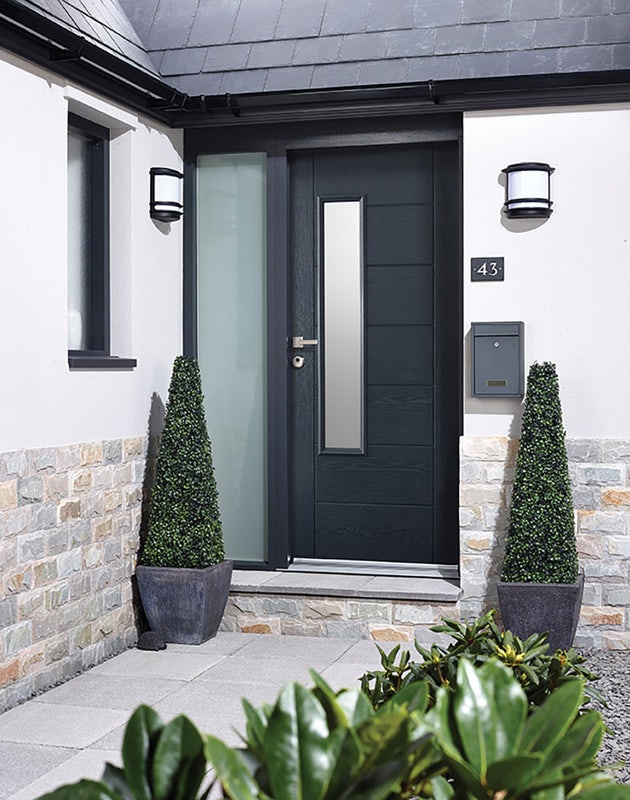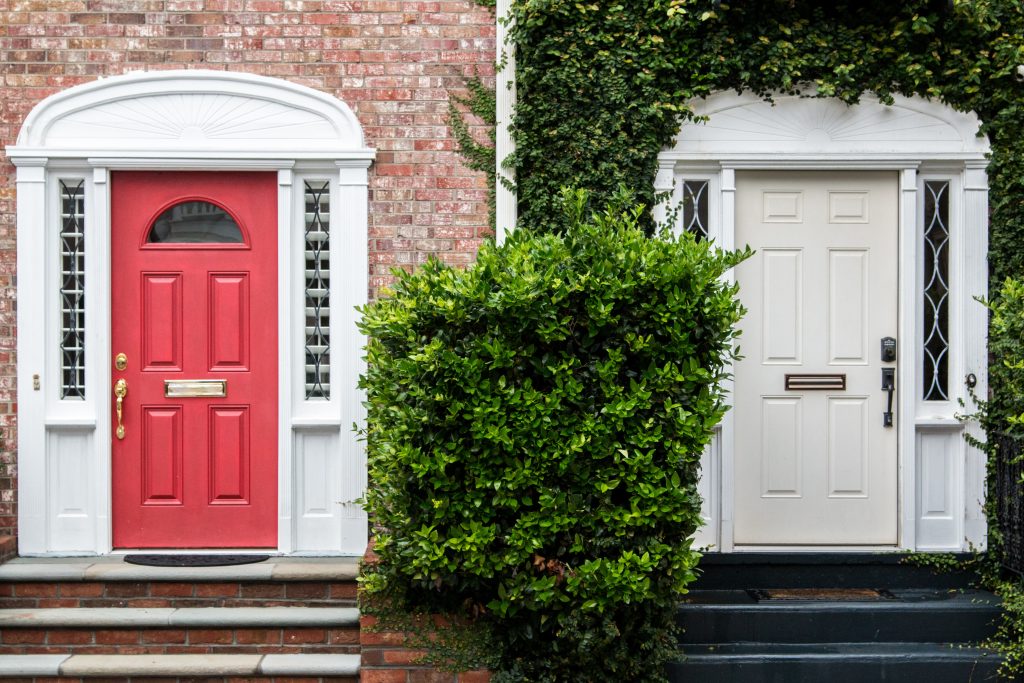If you have been looking for information on how to fit a composite door, you’ve come to the right place! Using the informative guide that we have carefully detailed below, you should be able to come away ready to fit like a pro!
Table of contents:
How to fit a composite door
Fitting a composite door can be easy with the right information. So what better way than with a few simple steps as seen below? First things first, what do you need?
What you will need
- Tape measure
- Hammer
- Stanley knife
- Crowbar
- Chisel
- Installation packer (aka size wedge packers)
- Electric drill with hammer action
- Phillip screwdriver
- Flathead screwdriver
- Silicone sealant gun
- Saw
- Rubber mallet
- Spirit levels
- 3mm Allen key
- 4mm Allen key
Note: If uncertain at any steps, do check manufacturer instructions as needed.

Preparation for fitting a composite door
Step one: Measure the door and frame as it sits before you do anything with the new door.
Step two: Take your new door, making sure to remove then dispose of all packaging from it, and measure the new composite external door before you remove the old one in case sizes are incorrect.
Note: Check the door for damages before installing a damaged door can increase risks of performance issues during future use.
Step three: Remove the existing door leaf to ensure you can prepare the opening. To make the removal process easier when it comes to protecting external features around the door (plaster, wall decorations etc), you can use a craft knife to score around the perimeter of the frame. You can also cut through the jambs at an angle, using a bearing block to protect the surrounding plaster and render, by lifting the jambs slightly away from the wall to ensure a clean cut. Use this method to also remove the top and bottom rails accordingly.
Note: Do not cut all the way through as you can risk damage to internal reveals or structures.
Step four: Once you have removed the door, make sure the opening does not have any leftover screws, nails, fillers, sealant mastic and plaster. This can leave you free to work in a clean space.
Note: Repair any risky parts of the door per BPF recommendations and confirm whether there is a lintel or load transfer structure that has been fitted above the doorway.
Step five: Make sure the composite door’s position within the brickwork is suitable for future door use.
Step five (i): Make sure the frame is square and plumb with no twisting (in both planes).
Step five (ii): Make sure the door’s outer frame is set back as far as possible to reduce exposure to elements. Secure into the brickwork with industry-standard plastic-sheathed frame fixing bolts (8 x 100mm length). Fix into the masonry (substrate) at a minimum of 50mm, then tighten and secure them in place until the frame is square.
Note: Do not over-tighten fixings to avoid frame distortion.
Step five (iii): Wall cavity: Make sure this is bridged
Step five (iv): DPC: Make sure this is covered.
Step six: Cover any flooring with a sheet or similar to protect from and collect any debris.
Step seven: Install the handle in place on the composite door as this can make the process easier.
Step eight: Fix the hinges to the outer frame. Typically when it comes to hinges you will need a butt (fixed) hinge, but other hinge types can be used. You may need to adjust the frame position during this stage, making sure it sits square and plumb before fixing it as instructed.
Check out how to fit a butt hinge here.

Installing a composite door
Step one: Carefully place the door into the prepared opening. It’s advisable to have support from another person for safety and reduce damage to the door.
Note: Open the door at 90 degrees and prop it up with a wedge to keep it steady.
Step two: Using an installation packer, hold the frame in position by placing the installation packers adjacent to the fixing positions. This can help prevent outer frame distortion when fixings are tightened.
Note: Not placing the installation packer adjacent to fixes means risk to how the door functions in the future.
Step three: Use a spirit level to ensure the jambs are square and plumb in all planes as this will ensure a secure and careful fit. Move forwards and backwards to adjust the fit if needed.
Step four: In the identified holes on the frame, drill through as recommended by the manufacturer and secure the frame into the brickwork using frame fixings.
Note: Do NOT secure into the mortar.
Tip: Remove the leaf from the frame to ease installation unless stated otherwise in the instructions.
Step five: At the leading edge, pack the bottom of the door leaf in place. This will help assist in getting square into the outer frame.
Step six: Clean the newly installed door around the areas where the sealant is to be placed to avoid dust and residue being contained in the sealant when applied.
Step seven: To help reduce empty gaps around the door, fill the space around the frame with expanding foam. Wait a minimum of one hour for it to cure.
Step eight: Apply sealant around the frame of the door to support the prevention of water or air passing through the spaces. Various colours of sealant can be found and used to ensure that there is a match to your door or brick colour.
Note: Do NOT cover any areas where drainage slots are needed around the aluminium wheelchair threshold.
Tip: For regular maintenance, clean the door using a damp cloth to ensure your door stays in top condition for years to come.
If you want to know more about hanging different types of external doors, you can find out more via our external door guide.











